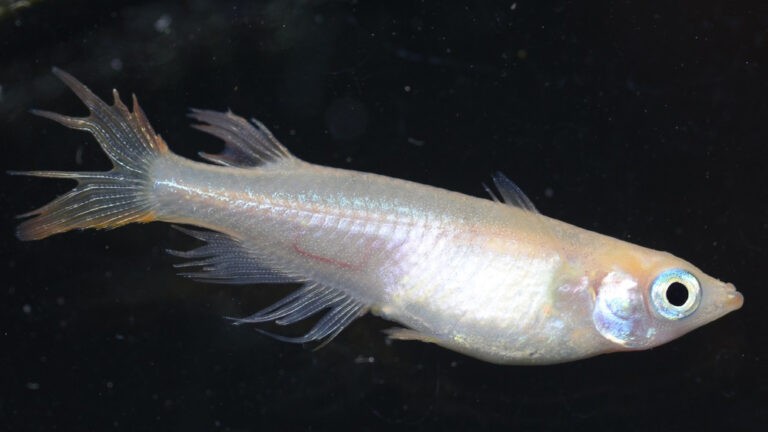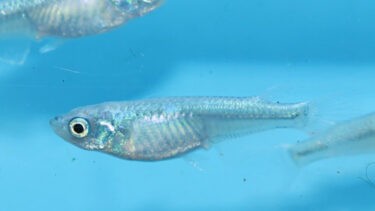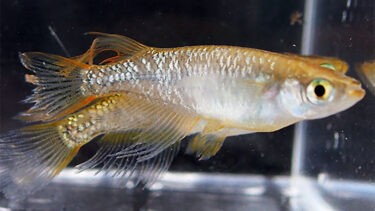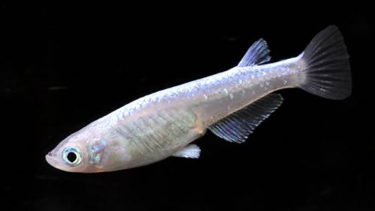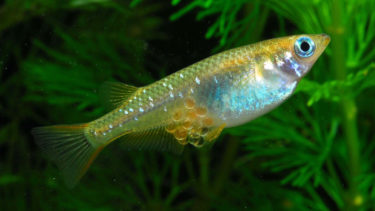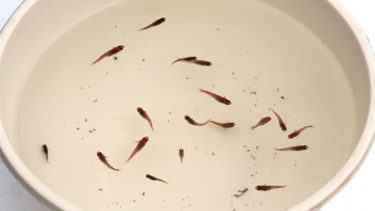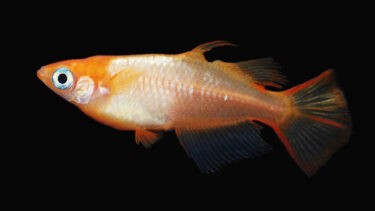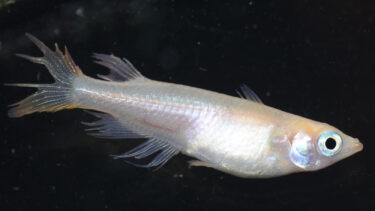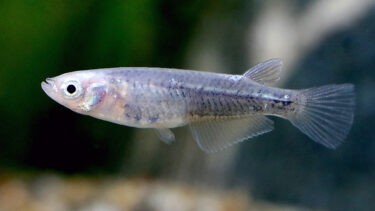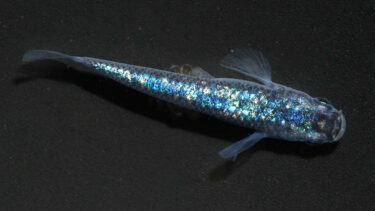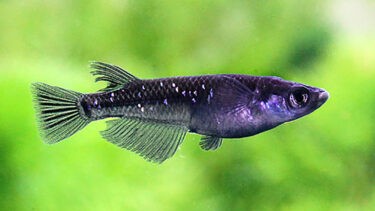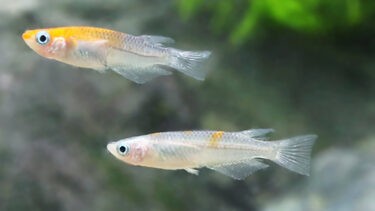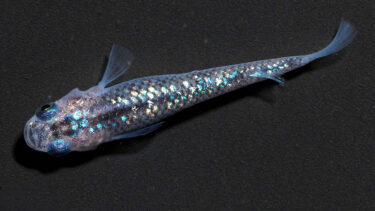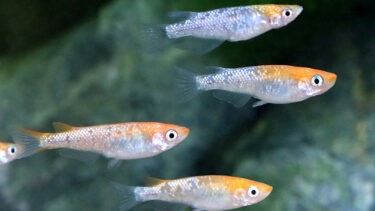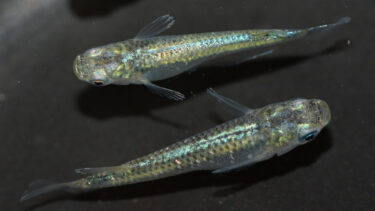The Meller killifish is a killifish with each fin divided into multiple pieces. The fins of the killifish stop growing in the middle of the fin membrane, and only the soft stripes have grown. The shape of its distinctive fins varies from person to person, and no two killifish have the same fin shape. In this article, I would like to explain in detail the characteristics of the Meller killifish and how to keep them.
What is Meller Medaka?
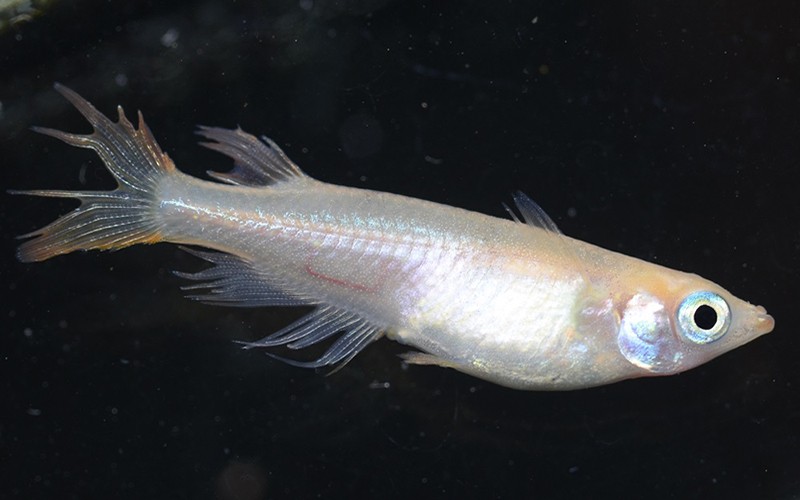
The Meller killifish is a killifish with each fin divided into multiple pieces. If you look closely at each fin, you can see striae (soft stripes). There is also a membrane (fin membrane) between the striae. The fins are made up of the soft striae and the fin membrane. In the Meller killifish, the growth of the fin membrane stops midway and only the soft striae have grown.The shape of their distinctive fins varies from person to person, and no two killifish have the same fin shape. The killifish swims with its fins fluttering in the water, creating a very beautiful sight. In recent years, medaka have been increasingly introduced in the media.
The marine blue killifish is a blue-bodied exotropic killifish with few black chromatophores. The marine blue killifish is one of the most refreshing blue killifish varieties. The beautiful blue color gives the killifish a very cool and refreshing impression. In this issue, we will [...].
The Swallow killifish is a killifish that has partially protruding and elongated soft stripes, which are part of each fin. The Swallow killifish is a very beautiful species that swims gracefully with its fins flexibly moving. Its elongated fins look like lace. In this article, we will introduce you to the Swallow killifish [...].
Origin of Meller's killifish
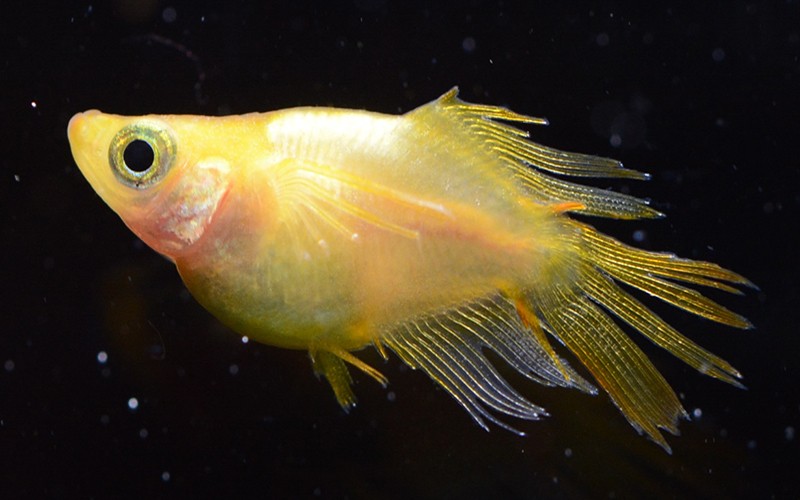
Meller killifish was created by Yukio Oba in 2013. In the beginning, individuals were born with only the tail fins that stopped growing halfway through and only the soft stripes grew. As the generations went on, individuals were born with all of the fins having unique characteristics.Normal Meller killifish tend to have short fins because their growth stops in the middle of the process. Therefore, individuals that have grown to normal fin size are considered superior individuals.
The Mikan-no-Medaka is a killifish with a bright blue glow on its back. There are various types of "Mikan-no-Medaka," including individuals whose body color is like that of blue killifish and white killifish. In this article, I would like to explain in detail the characteristics of these blue killifish and how to keep them. [...].
Points to keep in mind when mixing swimmers
About Mixed Swimming,Some people often think that killifish can only be kept in the same species, but the real appeal of killifish is in combining them. If you are not particular about this, you can mix any kind of killifish with any other kind of killifish.However, it is best to be careful with killifish of different body types (e.g., Dharma killifish and Hirena killifish). If killifish of different body types are mixed with killifish of normal body type, problems such as inability to eat food may occur. However, there are people who mix killifish of different body types with those of normal body types, so there is no need to be concerned.However, each type of killifish, which is considered a high-end killifish, has its own distinctive appearance and shine, so it is recommended to keep them in a way that allows the enjoyment of each individual (type) rather than keeping them in many different species.
Points about spawning
The point about spawning was explained in the above section that keeping a variety of species is the best part of keeping killifish, and having various species swimming together when spawning will naturally produce killifish with the characteristics of various species. However, that is not always a good thing. For example, mixing red and white killifish can produce pink killifish, but not necessarily red or white killifish, or in the worst case, killifish with a color that is hard to describe. If you want red killifish, you should keep only red killifish because the probability of producing red killifish is much higher,I recommend that you think about what kind of killifish you want when spawning and what color and shape you want your killifish to be born, so that you will have less regret and confusion when raising them and find your own way to enjoy them.If it is just a hobby, I think you will enjoy it more if you stick to the methods that you enjoy, regardless of whether people complain about them. The following page explains the method of spawning and points to note, so please read it as well.
Many people who keep killifish want them to spawn. However, not many people know about spawning and what they need to do to prepare for it. This time, we would like to explain the method of spawning and the points to be noted [...].
After the spawning is over, the fry hatch and are born. There are many things to take care of, such as the fry's food and precautions to be taken. In this article, I would like to explain how to raise the fry and what to do about it. The period of time until hatching is over when the spawning is finished and the eggs are [...]...
Points to keep in mind when keeping Meller killifish
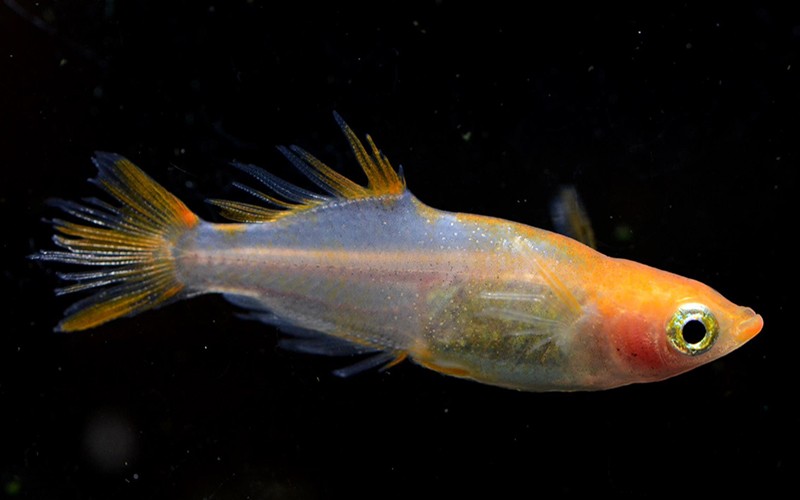
The Meller killifish is a new breed created in 2013. It is often compared to the fin-length killifish and the swallow killifish; the difference between the two varieties is that the other varieties are characterized by the elongation of the fins, which makes each fin longer than the other. The difference between the two species is that the other species is characterized by the elongation of its fins, which results in the shortening of each fin compared to the other species.Even similar looking killifish can give different impressions, so please refer to them when you are in doubt. Another attraction of killifish is that individual differences in killifish are very common, and no two killifish have the same fin shape. If you are interested in killifish, we recommend that you take a look at them at a specialty store.
The Seruffin killifish is a killifish with two separate dorsal fins. The cellophine killifish is a species with two dorsal fins due to the lack of either a fin membrane or a soft stripe on the dorsal fin. Some killifish have two dorsal fins, others have three dorsal fins, and still others have two dorsal [...].

